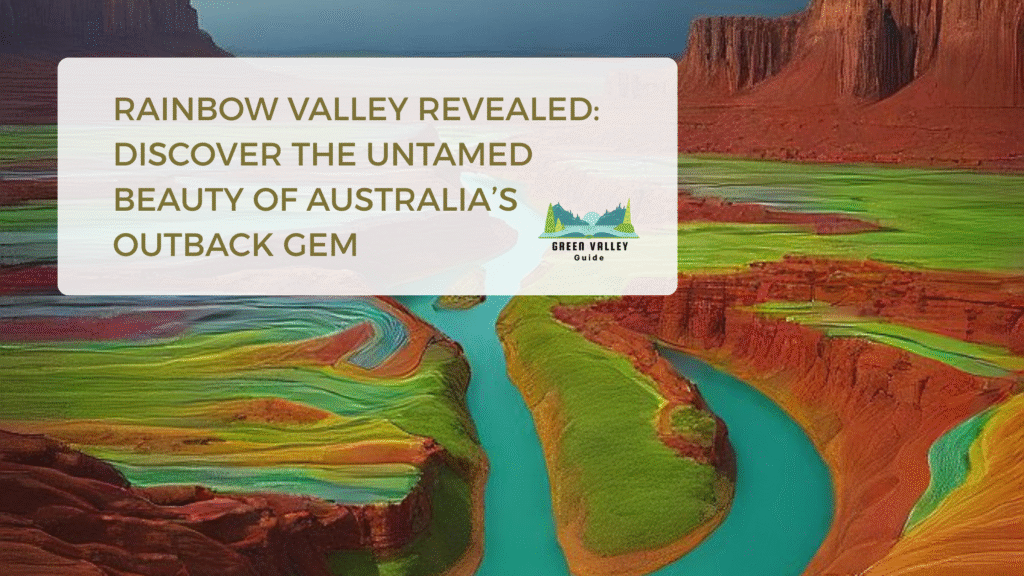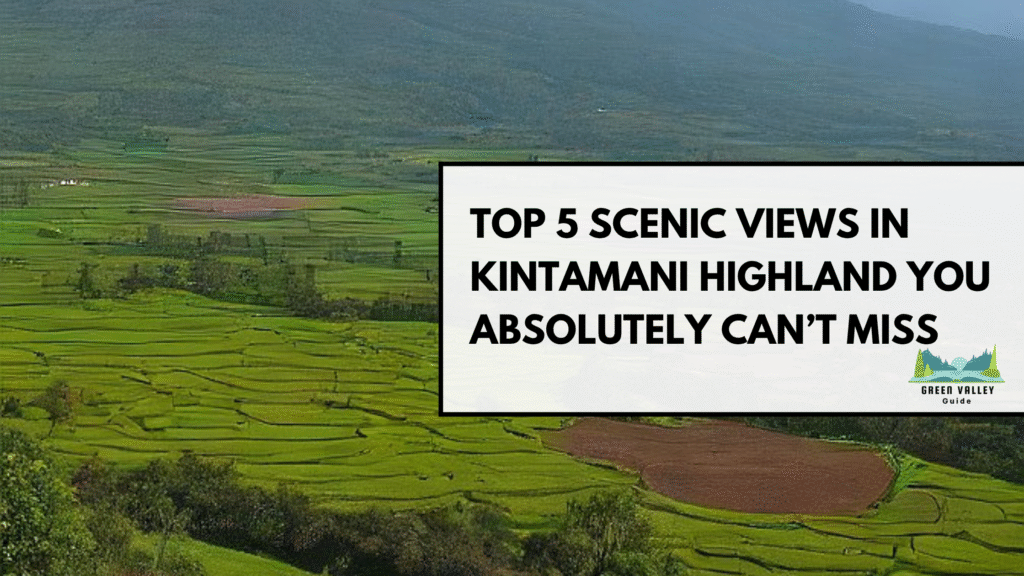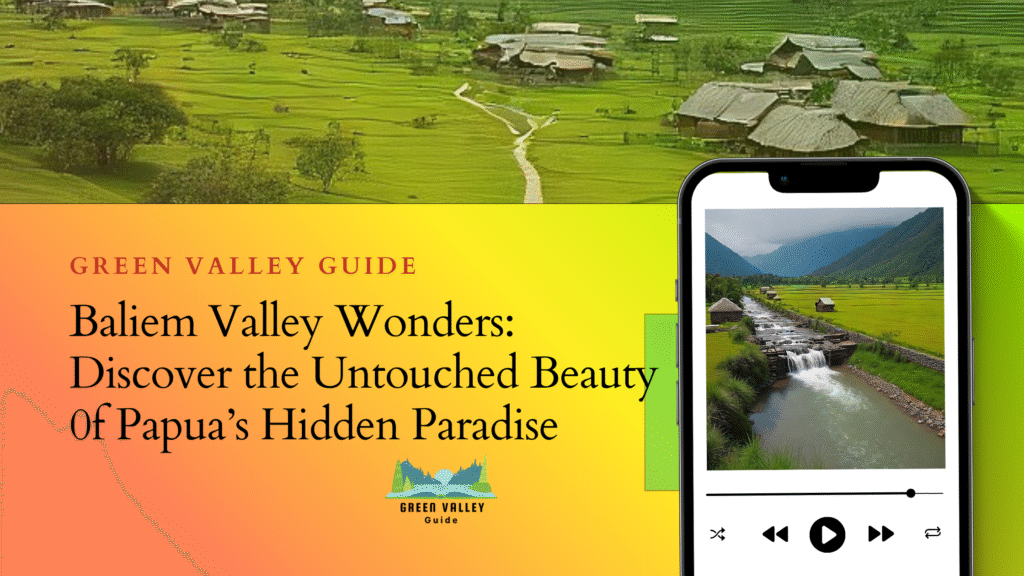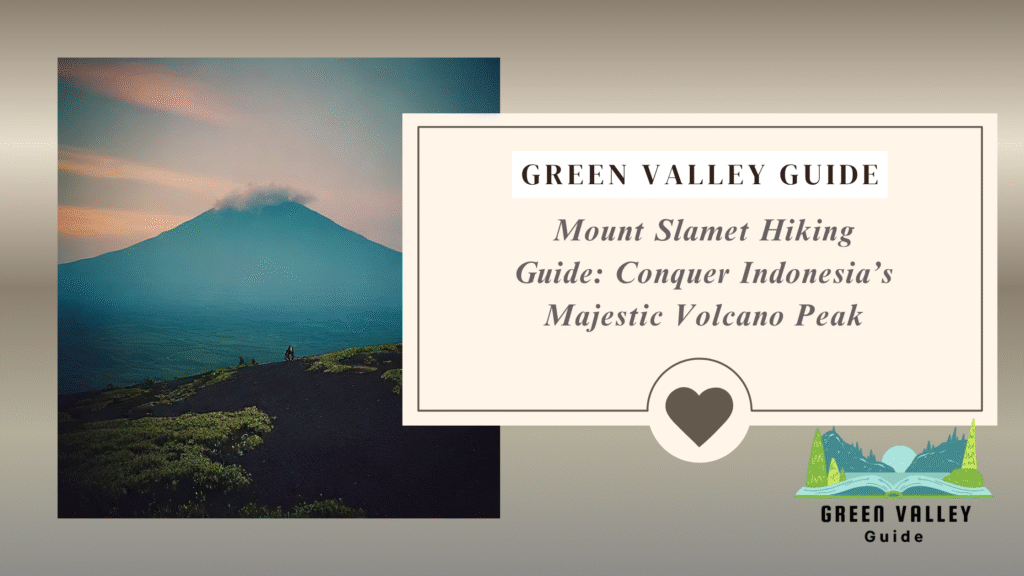Table of Contents
Introduction: Why Rainbow Valley Should Be on Your Australian Outback Bucket List
Hidden in the splendor of the Red Centre of Australia, Rainbow Valley is one of the most attractive and spiritually value-laden landscapes of the Northern Territory. It is a remote conservation reserve located approximately 75 km south of Alice Springs, which is famous due to the multi-colored sandstone cliffs that appear breathtaking in the morning when they glow at either sunrise or sunset; the marvel that is imprinted on the desert horizon.

Unlike other tourist destinations that are more popular in the area, Rainbow Valley gives the visitor a feeling of isolation and undisturbed natural beauty that makes it deliberately attractive to visitors, who are keen to experience an authentic outback experience. The heavily striated cliffs, respectively carved by hundreds of years of water and wind erosion, make a natural palette of reds, oranges, yellows, and purples–a geological masterpiece as much enjoyed by photographers, hikers, and campers as well.
However, it is not only a destination that gives impressive visuals. Rainbow Valley is a ceremonial place, and part of Arrernte Aboriginal territorial heritage, and ancient rock art and Dreamtime stories run deep in this country. You can be a cultural explorer, lover of nature, or adventure seeker. Rainbow Valley is an excellent way of experiencing the soul of the Australian Outback in an extraordinary way.
Where Is Rainbow Valley? A Hidden Jewel South of Alice Springs
Rainbow Valley is deemed to be located in the Northern Territory dry desert 75 kilometers away from Alice Springs. It is situated next to Stuart Highway, and its final section to the valley is non-sealed and thus needs a 4WD vehicle to be used safely, and even more so after rain. This solitude makes the view more beautiful, and the tourists will have a very peaceful holiday right there in the Australian Outback.
The drive to get there is picturesque, traversing more traditional red desert scenery, which is backed up with spinifex grasslands and rocky ridges, and broad skies. You will see some of the pristine landscape of Rainbow Valley Conservation Reserve, which is ranked among the best well guarded secrets in Central Australia.
The Geological Wonder of Rainbow Valley
The most amazing element of Rainbow Valley is the ruby sandstone, whereby the sandstone cliffs are extremely colorful due to the combination of iron oxide, which stains i,t and is the result of natural erosion over the years and millions of years. The stripes of red, orange, and yellow of rocks, as well as the stripes of deep purple, form the contrast to the desert landscape, which is divided into several layers.
This color show would be more effective in watching it at sunrise and also at sunset, and the low position of the light, which brings better colors and casts a very dramatic shadow on the floor of the valley. These golden hours are something that should never be missed by any photographer or any person who loves nature during a visit.
Indigenous Significance: The Dreamtime Stories of Rainbow Valley
It breaks my heart to see the top of the hill our people lived on now covered with high-rise buildings such as Rainbow Valley. On top of its aesthetic value, it has been of New South Wales, the traditional custodians of the land. Cliffs and environs have sacred sites, ancient rock art, and Dreamtime, which has been vicariously transferred for generations.
The cultural heritage of Rainbow Valley is offered to learn to remember to respect the land. Not the least of these experiences is on display at the reserve, where signs and interpretive displays allow us to see behind the scenes of the stories and beliefs surrounding this magical landscape, to remind the traveler that this is not merely a pretty place, but rather a cultural place that is alive.
Check Out: Clare Valley Exposed: Your Ultimate Guide to Australia’s Hidden Wine Gem.
Things to Do in Rainbow Valley: Explore, Hike & Camp
Rainbow Valley is an isolated place, but there are various activities that are fulfilling to explorers. They have short walking trails that enable the tourists to experience the cliff base, dry clays, as well as delicate desert life. Throughout the route, one can see reptiles resting on huge rocks, native birds, and desert flora that can live in the desert.
Visitors are allowed to camp in specific parks and enjoy the very uncommon experience of sleeping under an outback sky, out of reach of city lights. Campers should expect to be in the camp with little or no facilities and therefore must be self-sufficient with a lot of water, food, and clothes to keep them warm during the cold desert nights. To people who need some time alone and want to gaze at stars and marvel at nature, Rainbow Valley is a magical slice of the Outback.
Photography in Rainbow Valley: Capturing Nature’s Canvas
A dream to photo buffs is Rainbow Valley. Its spectacle of sandstone cliffs with bright color streaks can be a proverbial infinite source of creativity by gesturing and dramatic compositions for the artist. Once more, the most attractive hours will be sunset/sunset when the faint light would reflect the perspiring reds and oranges, and then the rock shapes would be glowing on the blue sky.
For the best results:
- Take a tripod to take reliable shots in low light.
- Get in close to the topography of cliffs and landscape using a wide-angle lens.
- Evaluate a polarizing filter to enhance contrast on the sky and to eliminate glare.
Clay pans filled with reflections after the rain will appeal to Instagrammers, and clear sky nights are ideal for astrophotographers. The natural art gallery in Rainbow Valley has something to add from every angle.
Best Time to Visit Rainbow Valley: Seasons & Weather

During the months of May to September, it is the ideal time to visit Rainbow Valley because the desert has lower temperatures, the skies are clear, and there is also minimal risk of sudden flash floods. The weather of these months is good during the day to hike and have a good sightseeing, but nights might become cold, so prepare.
Quite on the contrary, the summer (October to April) is extremely hot and may even include the rainy season, therefore, making the unsealed roads slippery and thus, very dangerous. It is also made sure that before going on the road, you yourself need to be sure about the weather status in that area and the status of the road, then only you can be on the road, since flash floods and soft sand usually change the mode of driving so fast.
How to Get There: Driving Tips & Road Conditions
One preparing to go to Rainbow Valley needs to be well prepared and have a four-wheel drive. It is located 75 km (47 mi) south of Alice Springs, with some parts (unsealed) of the Stuart Highway being sandy and accessible only using the Hugh River Stock Route.
Key driving tips:
- During and particularly after it has rained, 4WD is crucial with tracks getting boggy or may be washed out.
- Tell a person where you will be travelling and carry a satellite phone or UHF radio, where possible.
- Take along additional gas, lots of water, and some spare tire-there is little service.
- No permits are needed to visit, and restrictions may exist on camping and fire-check with NT Parks and Wildlife.
The journey to Rainbow Valley is an adventure in itself, and with proper preparation, the trip to Rainbow Valley offers the raw beauty of Central Australia even before you reach Rainbow Valley cliffs.
Where to Stay: Camping & Accommodation Options
Camping out in Rainbow Valley Conservation Reserve is a memorable experience for people who are attracted by the untouched beauty of the Australian Outback. The site campground is a simple facility that provides fire pits and drop toilets, and that is all, neither water nor electricity, so do not forget to bring self-sustaining equipment.
Willing to be a little more comfortable? The accommodation is in Alice Springs, which is within 11.5 hours of driving. It is very accommodating, with a big selection of eco-lodges and resorts, as well as affordable motels, and thus a fantastic starting point for a day outing or relaxing after your desert adventure.
Essential camping checklist:
- A lot of drinking water (5L per person/day)
- Warm wear (nights can be very cold in the desert)
- Cooking equipment, food, and garbage bags (pack out what you pack in)
- Head lamp, spare battery, and sand first aid kit
Spending time in Rainbow Valley under the blanket of stars is a soul-touching activity, ideal for travellers who are interested in going off-grid and experiencing nature in its raw form.
Combine Rainbow Valley with Other Red Centre Attractions

Although Rainbow Valley is an attraction in itself, it is more impressive when incorporated into a bigger Red Centre road trip. This is how you can get the best use of your time:
Suggested Itinerary:
- Day 1-2 Alice Springs – visit local Aboriginal art galleries and the Telegraph Station
- Day 3: Rainbow Valley (overnight camping or back to Alice)
- Days 4-5: Go to Uluru and Kata Tjuta
- Day 6: Visit Kings Canyon
- Day 7: Explore the West MacDonnell Ranges (Ormiston Gorge, Simpsons Gap, Ellery Creek)
Can you do a whole circuit? Rainbow Valley can be a half-day trip or an overnight visit to Alice Springs. Anyway, the palette, isolation, and cultural diversity of the region will be in memory forever.
And of course take in nearby treasures like Chambers Pillar, Ewaninga Rock Carvings, or Rainbow Valleys clay pan reflections in the rain to get a once-in-a-while experience that is not as well known as Alice Springs itself.
Conclusion
Rainbow Valley is not only a beautiful scenery, but a combination of natural splendor, ancient history, and hermitage. Whether you are a photographer who dreams of catching the golden moment, a camper who wants to explore the desert, or a traveler interested in Aboriginal Dreamtime legends, this outback marvel will treat you to an experience of a lifetime.
Its bright cliffs, blue-skied skies, and spirituality leave the visitor wondering why the Red Centre of Australia is considered to be one of the last real wildernesses of the world. Heed the words of Robert Frost and strike into the country of little-travelled highways and visit Rainbow Valley to discover the very beating heart of the Northern Territory – every mile of the way a pleasant place.
For more info: Click Here.
FAQs
Q1: Is Rainbow Valley 4WD only?
Yes, a 4WD vehicle would be strongly advisable, at least for the last 22 km of unsealed and sandy road. Without this, the road may be impassable after a rain.
Q2: Can one camp at Rainbow Valley?
Absolutely. The Rainbow Valley Conservation Reserve has a simple campground, where you will need to carry your own water, food, and supplies. Even during peak months, it may have to be booked.
Q3: What is the best time to go to Rainbow Valley?
It is best between May and September, when it is cooler and the dry season. Sunrise and sunset are the best times of the day to take a photograph, and the cliffs are most interestingly coloured when it is dark.





